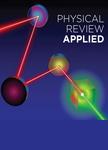版权所有:内蒙古大学图书馆 技术提供:维普资讯• 智图
内蒙古自治区呼和浩特市赛罕区大学西街235号 邮编: 010021

作者机构:Solar Energy Research Institute of Singapore (SERIS) National University of Singapore 7 Engineering Drive 1 Singapore 117574 Singapore Department of Chemical and Biomolecular Engineering National University of Singapore 4 Engineering Drive 4 Singapore 117585 Singapore Fraunhofer Institute for Solar Energy Systems (ISE) Heidenhofstrasse 2 79110 Freiburg Germany
出 版 物:《Physical Review Applied》 (Phys. Rev. Appl.)
年 卷 期:2016年第5卷第5期
页 面:054002-054002页
核心收录:
基 金:National University of Singapore Singapore's National Research Foundation through the Singapore Economic Development Board
主 题:Photoconductivity Organic semiconductors Solar cells Spectroscopy
摘 要:We develop a predictive and mechanistic model for the intensity-modulated photocurrent spectroscopic (IMPS), intensity-modulated photovoltage spectroscopic (IMVS), and electrical impedance spectroscopic (EIS) responses of organic bulk heterojunction (BHJ) solar cells. Unlike the dominant analytical framework—equivalent circuit analysis—the model uses physical parameters that directly reflect the device’s fundamental electronic mechanisms, eliminating the ambiguity associated with interpreting phenomenological parameters. Formulated in the frequency domain, the model is a computationally efficient tool for extracting parameters from the measured spectra. With a set of physical parameters representing a device, we predict the device’s spectra (a) in techniques employing different methods of perturbing a device and (b) at different bias voltages and illumination intensities. The predicted spectra show good agreement with the measured ones. By quantifying the device’s internal electric field and charge carrier concentration and relating them to the spectra, we determine that the IMPS responses at the short-circuit condition and the IMVS responses at the open-circuit condition directly reflect the charge carrier extraction and recombination, respectively. Furthermore, the EIS response indicates the device’s recombination time scale at different bias voltages.